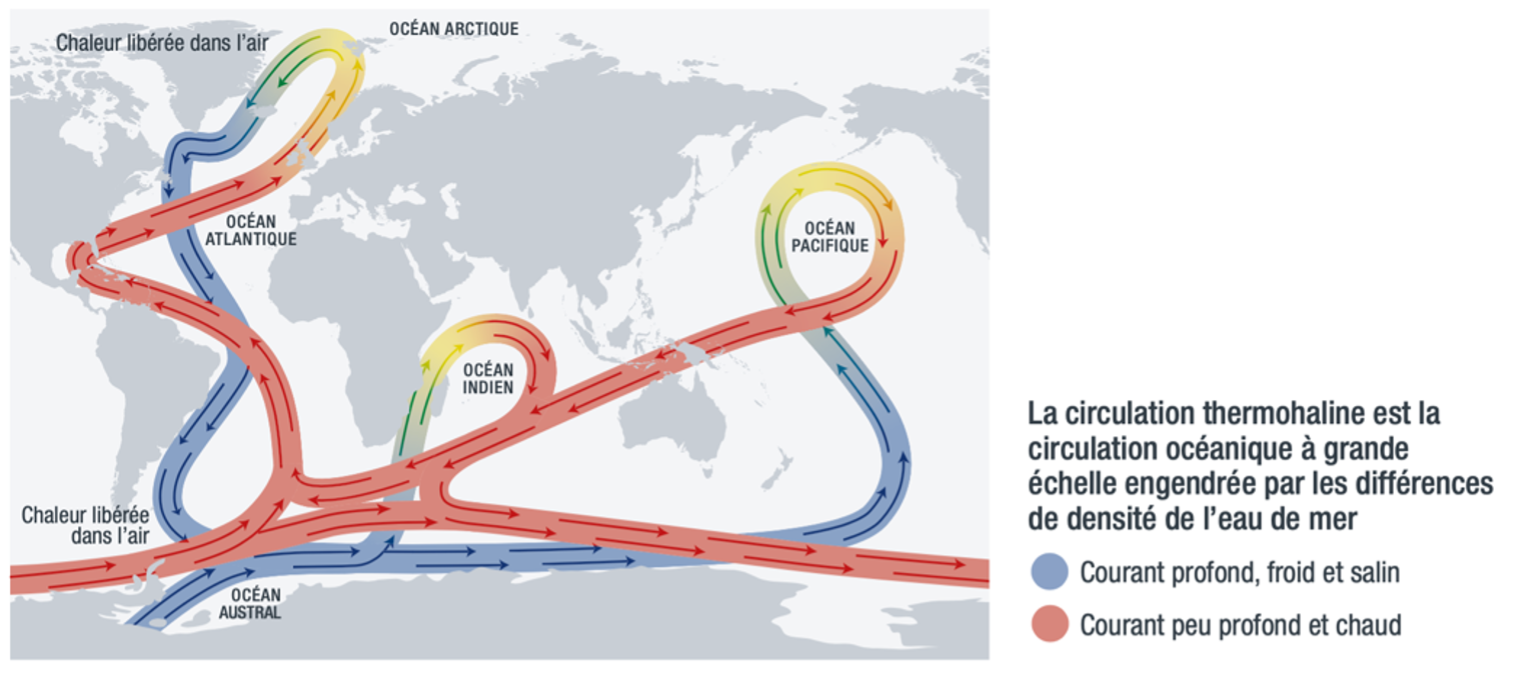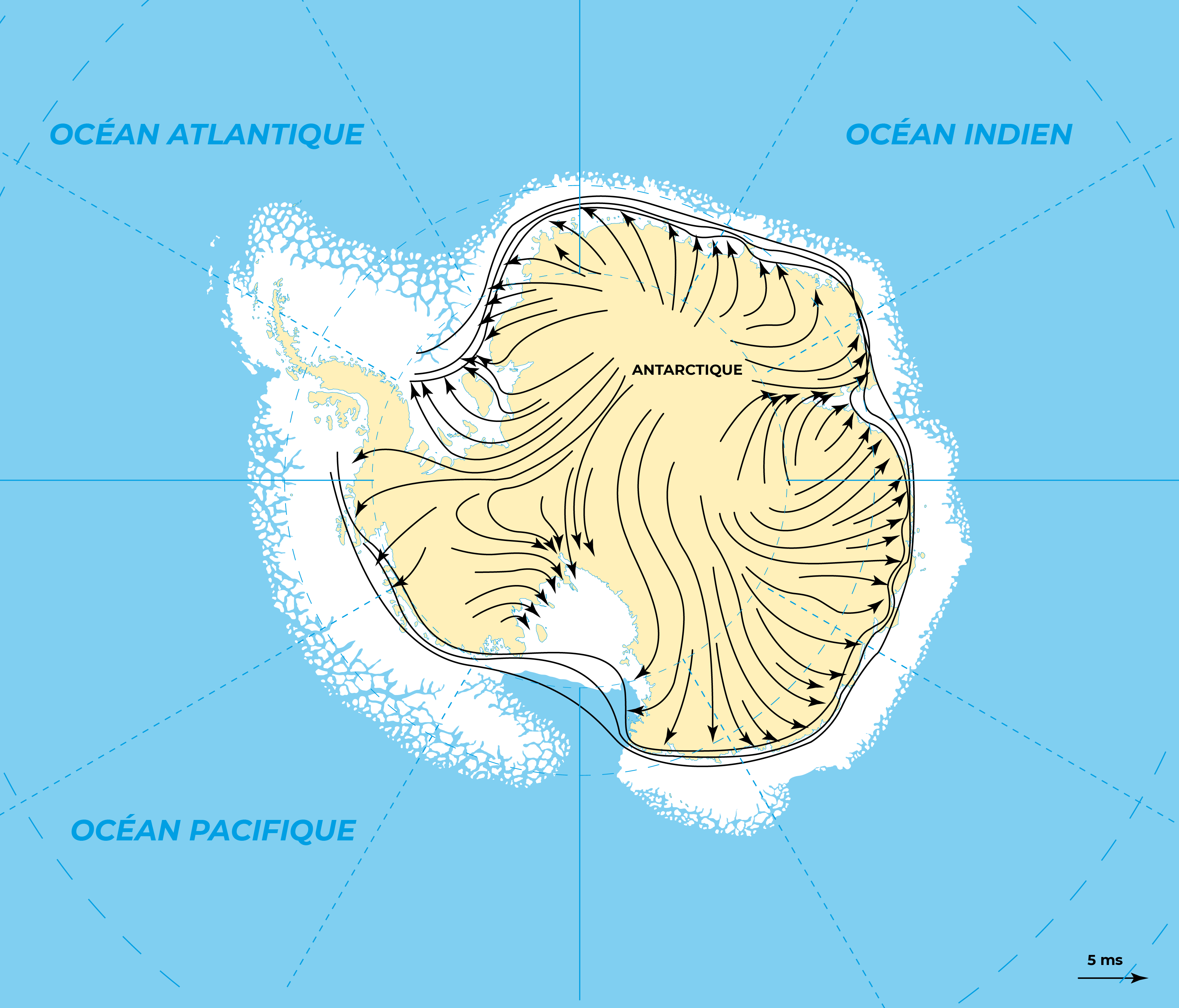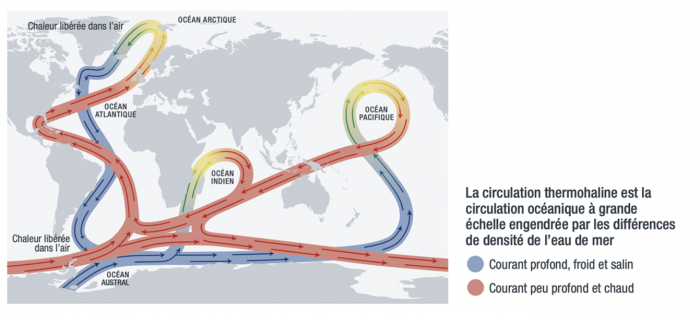Polar Encyclopædia
ANTARCTIC CLIMATE

On its way, the Polar POD will encounter the westerly wind belt of the Roaring Forties and the Howling Fifties, and then, near the continent, the circum-Antarctic lows with, at times, large gusts of icy air coming down from the cap; and despite the tepid presence of the ocean, the air temperature will drop well below 0°C. At Christmas, beyond the Arctic Circle, the crew will live in a continuous day.

What you should know :
Why is it so cold in Antarctica? In addition to the tilt of the Earth's axis of rotation, which limits the amount of sunlight that reaches the two polar regions in relation to the equator, more than 80% of the summer solar energy that reaches the Antarctic ice is reflected back into space, compared with 35% on the continents and 15% on the ocean. This is called the albedo. And in winter, the ice pack doubles this white reflective surface. Moreover, snow radiates energy in the form of infrared (radiation linked to the temperature of a body). In total, the immense Antarctic loses more heat than it receives: it is a real "cold sink". This loss is compensated by the surrounding ocean and by air from temperate regions.
As a fundamental element of ocean-ice-atmosphere exchanges, Antarctica is one of the drivers of the climate. In the global functioning of the "atmospheric machine", the warm and humid air that rises above the equatorial regions falls back, cold and dry, at the poles. This mixing, deviated by the Earth's rotation (Coriolis force) and the particular distribution of land in the Southern Hemisphere, creates the southern oceanic high pressure belt and a stable low pressure "trough" (in other words a low pressure area) at the periphery of the continent. During the long winter night, the Antarctic air is isolated from the general circulation in the center of a gigantic atmospheric circulation carousel. This is called the Antarctic vortex.
Likewise, Antarctica and the Arctic are regions responsible for the formation of bottom water, dense and therefore "heavy" water that is loaded with salt near areas where ice is created. This water then plunges into the ocean and feeds the engine of the great conveyor belt known as the "thermohaline circulation". The proper functioning of this circulation ensures the exchange of heat and salt in the world ocean and thus a large part of our regional climate. The dipping of the waters in the Arctic is notably an engine of the "Gulf Stream" giving a warmer and milder climate at the latitude of Bordeaux in France, compared to that of Montreal.

Extraordinary "dry valleys" have been discovered in the mountains of Victoria Land and towards the east coast. There, glaciers do not reach the sea, but converge towards the basins swept by the very dry winds that descend from the plateau and evaporate snow and ice, mummifying for millennia the bodies of stray animals and exposing the rock: a boon for geologists and biologists! At the bottom of strange salt lakes, the water reaches 25°C thanks to the play of light through the surface ice. Without a single drop of rain for 2 million years, these valleys have served as a model for NASA to imagine the climate on Mars.

The Antarctic climate is characterized by wind, cold and drought. Brought to the coast by oceanic depressions, precipitation decreases rapidly towards the interior: from 900 mm of water (90 g/cm2 of snow) falling per year at the tip of the Peninsula, the quantity drops to barely 30 mm in the heart of the continent. This is less than in many deserts. This dryness and the absence of dust give the Antarctic air an extraordinary purity. Temperatures also decrease towards the interior, but also according to altitude; between the coast and the highest point of the cap (4,000 m, in the east), the difference varies from 0° to -35°C in summer, and from -10° to -80°C in winter (world minimum: -98°C in East Antarctica and maximum of 20.7°C recorded on the Antarctic Peninsula in February 2020). As for the winds, the Antarctic coast is subject to the strongest gusts in the world: peaks of 327 km/h were measured in June 1977 in Terre Adélie (the Beaufort scale, which stopped at typhoons, had to be completed...). At these speeds, men and equipment are blown away! This violence is due to a particular flow of polar air, which is very cold on contact with the ground and therefore very dense, and which "trickles" more and more rapidly from the heights of the cap towards the periphery, under a warmer layer. These winds are called katabatic (from the Greek kata, below). The katabatic winds "warm" the polar regions by "carrying cold" to the peripheral regions; they also participate in the formation and dispersion of pack ice. Blizzards, on the other hand, can last for several days with unpredictable gusts; they lift and transport enormous quantities of snow from the ground, making any travel impossible and dangerous. There is only one way to protect yourself: wait and take shelter.
Suggested activities
The Antarctic climate
- At what latitudinal limit is there a 24-hour day (and a midnight sun)?
- Compare the upward movement of warm air and the downward movement of cold air observed at the global level with those observed by a planar delta specialist.
- Imagine an experiment to immerse dense, salty water in an aquarium. Do the same experiment with warm water to compare their behavior.
For more detail
Books :
- Glaces de l’Antarctique - C. Lorius
- La voix des pôles – L. Lescarmontier
- Le changement climatique, Questions / Réponses – M. Hirtzig, M. Tricoire, D. Wilgenbus
Miscellaneous:
- Office for Climate Education : oce.global
Support the project with a donation
The Polar POD expedition is one of the stamp of the pioners, a human adventure coupled with a technological challenge, an oceanographic exploration never before carried out which will mark a milestone in the discovery of the oceans.
Thank you for your support !
